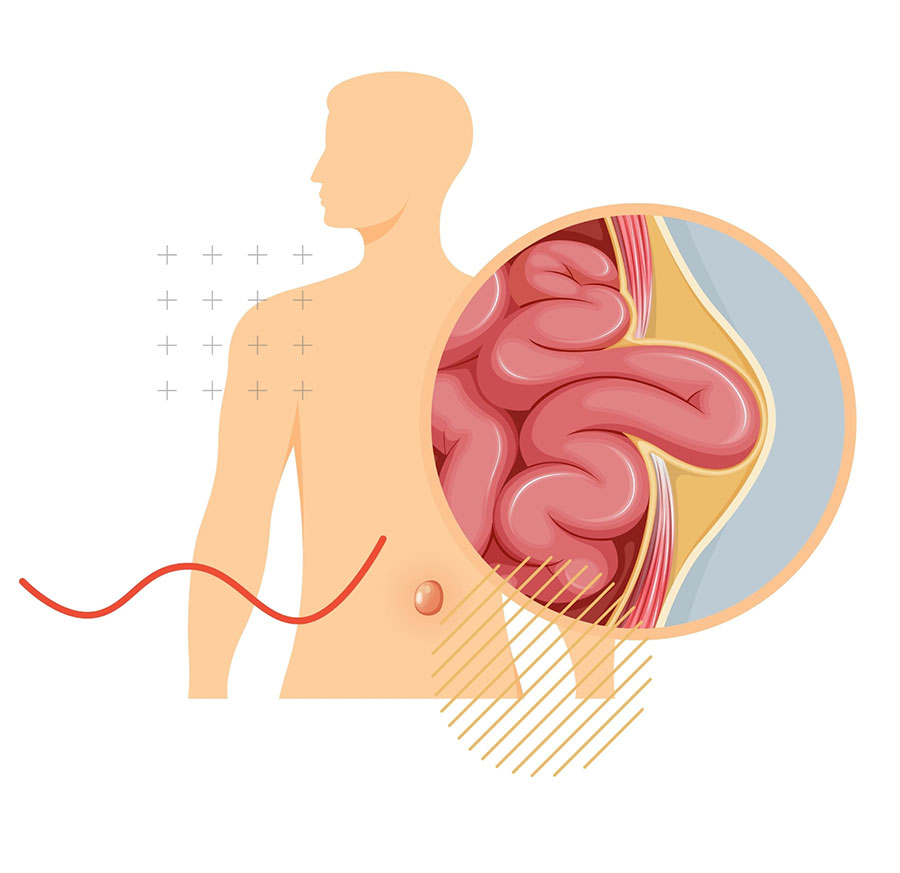ABOUT HERNIAS
Inguinal and Umblical Hernias
A) What is an Abdominal Wall Hernia? How Hernias Occur?
Abdominal hernias involving the abdominal wall typically refer to inguinal hernias, umbilical hernias, and incisional hernias. Among these, inguinal hernias are the most common type of abdominal wall hernia. They are also among the most frequently performed surgeries worldwide, with approximately 25 million people undergoing inguinal hernia surgery each year. In the United States, about one million of these surgeries occur annually, and I estimate about 75,000 occur in the UK.
An abdominal hernia occurs when internal organs protrude through the abdominal wall over time, forming a bulge towards the skin. Patients with an inguinal or umblical hernia can easily recognize the condition themselves. Inguinal hernias are more commonly observed in males; for every ten males with an inguinal hernia, only one female is affected. The majority of our patients with inguinal hernias are males whie umblical hernias are just the opposite..
How do abdominal hernias occur? Our internal organs are enclosed within the abdominal cavity, surrounded by the peritoneum. Outside of this, there is a tough protective layer composed of muscles and bones known as the "abdominal wall." To visualize, if we compare it to a soccer ball, the inner tube represents the peritoneum and the tough outer layer, the abdominal wall.
A hernia refers to the protrusion of internal organs, along with the peritoneum, through any hole, tear, or opening in the abdominal wall. The protruding tissues form a bulge under the skin, which is particularly noticeable when standing and may recede or disappear when lying down.

B) Types of Hernias: Focus on Inguinal and Umbilical Hernias.
Inguinal and umbilical hernias, which are frequent ailments affecting a wide range of individuals, from infants to adults.
Inguinal Hernias: Inguinal hernias are the most prevalent type of hernia in the abdominal wall. They occur when tissue, such as part of the intestine, protrudes through a weak spot in the abdominal muscles around the inguinal canal, creating a bulge. This type of hernia is more common in men due to the natural weakness in this area that results from the way testicles descend during fetal development. Symptoms can include pain, especially when bending over, coughing, or lifting, and a noticeable bulge in the groin area that becomes more apparent when standing.
Umbilical Hernias: Umbilical hernias occur near the belly button or umbilicus and are most commonly seen in infants, but they can also affect adults. These hernias are caused by a small opening in the abdominal muscles that allows tissues to bulge through. In infants, this usually resolves itself as the abdominal muscles strengthen, typically by the age of three to four years. In adults, however, umbilical hernias might require surgical intervention if they cause discomfort or lead to complications.
Both types of hernias may need surgical repair to prevent potential complications such as strangulation, where the blood supply to the herniated tissue is cut off, leading to severe pain and potentially serious health risks.
